WHAT DID HE ACTUALLY DO?
Thoughts on Holy Week – 1
LENT IS COMING!
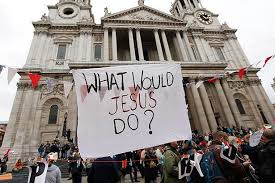
Easter is early this year (March 31st). So Ash Wednesday, marking the start of Lent is equally early. So here is a reminder of what I believe was the real story of Holy Week. It starts with the short verse in Mark’s gospel: ‘He would not allow anyone to carry trade goods through the Temple.’ (Mark 11.16). The only way that could happen is if Jesus actually took over the Outer Court with the backing of thousands of Galilean pilgrims. In other words it was not a demonstration. It was an occupation. Just like Occupy London in 2011.
TRUTH FROM FICTION
In 2020 I wrote a historical novel about the last week of Jesus’ life. It was a much more exacting discipline than I had expected. You have to be rigorous in terms of location, timing, character and context. After all Jesus was a 1st century Galilean Jew who spoke Aramaic. So in the book all names are in Aramaic. Jesus is Yeshua, Simon Peter is Shim’on Kefa.
And reliable historical sources are crucial.
WHO TO TRUST?
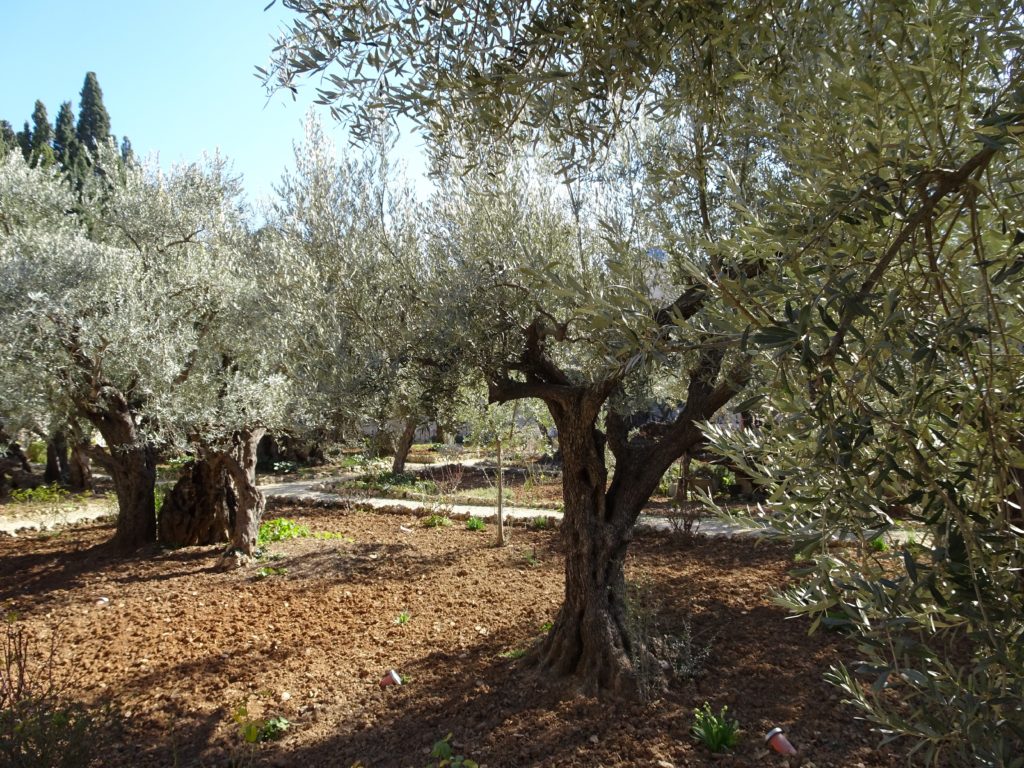
If you have followed my previous blogs you will know that Mark is my gold standard. I believe he was an actual first-hand witness at Gethsemane: ‘A certain young man was following him, wearing nothing but a linen cloth. They caught hold of him, but he left the linen cloth and ran off naked.’ (Mark 14.51-52). And by tradition, the later companion of Simon Peter. He is the one who gives specific details in his accounts, such in the story of the storm at sea. Only Mark tells us ‘Other boats were with them.’ (Mark 4.36)
Following Richard Bauckam’s book ‘The Testimony of the Believed Disciple’, I believe that the John who wrote the gospel was a Jerusalem disciple, whose accounts of events in Jerusalem need to be taken seriously. But the speeches and dialogues were, I think, created by John himself, just as historians of that time would do.
I believe Luke is a reliable transmitter of tradition, because he reports Mark accurately even in contentious passages. Not so Matthew who is a good editor but also sadly editorialises and, in my view, makes things up.
STARTING OFF
The story of Yeshua’s last week really starts three days before his arrival in Jerusalem, when he was walking along the Jordan Valley.
‘They were on the road, going up to Jerusalem, and Jesus was walking ahead of them; they were amazed, and those who followed were afraid.’ (Mark 10.32)
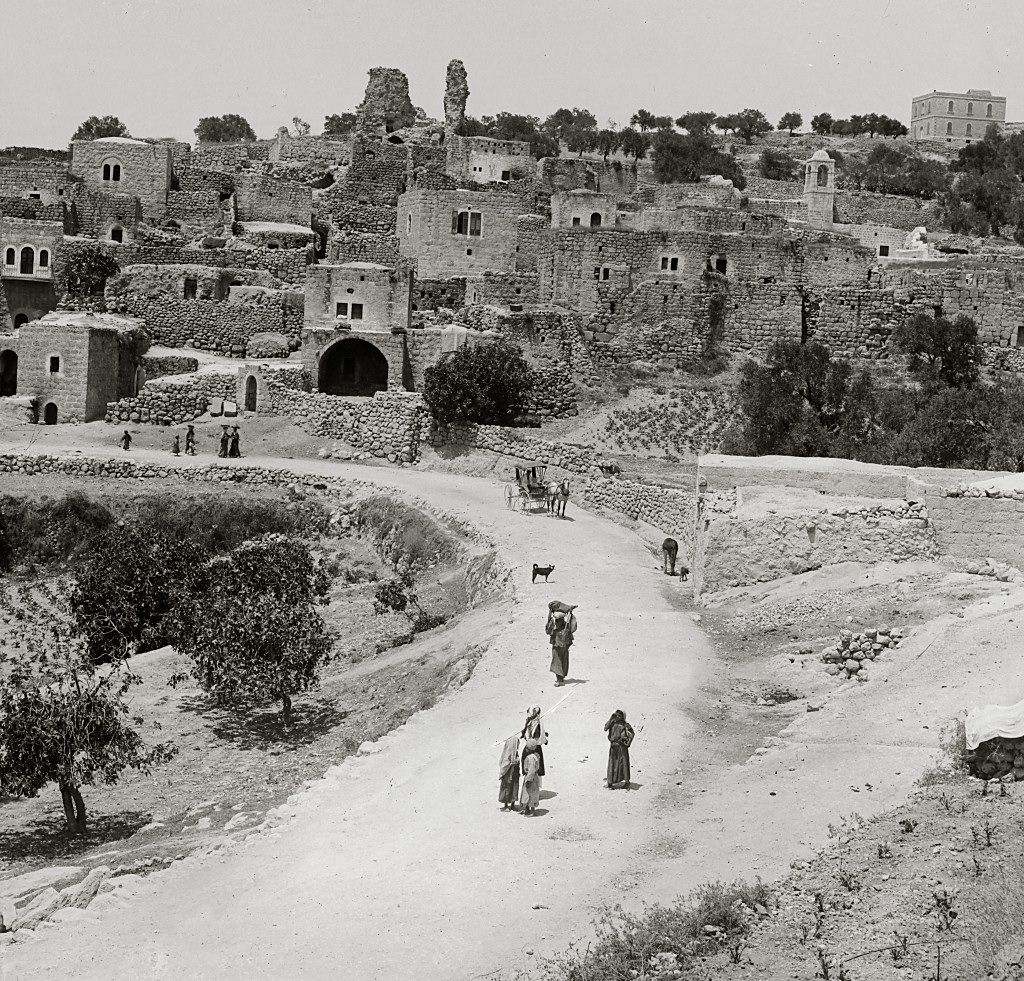
It is a compelling picture. Yeshua preoccupied and stressed as he contemplates the conflict awaiting him in Jerusalem/Yerushalayim. And his loneliness surrounded by his uncomprehending followers. That is when he tells his closest followers “(The Gentiles) will mock him, and spit upon him, and flog him, and kill him; and after three days he will rise again.” (Mark 10.34)
It is likely that this episode goes back to the earliest tradition, indeed to Jesus himself, because it’s wrong! The gospels report the resurrection as happening 36 hours after Yeshua’s death. It is at the most two days. That is why Matthew and Luke smooth over the difference by having Yeshua speak of rising on the third day – a theoretical possibility if he died before sunset and rose after the following sunset. The road past Bethany c.1900
WHY WAS JESUS LATE?
Mark tells us that Yeshua entered the temple late on Palm Sunday. ‘Then he entered Jerusalem and went into the temple; and when he had looked around at everything, as it was already late, he went out to Bethany with the twelve.’ (Mark 11.11). Note: it does not say, he went back to Bethany.
Why was he late? Because he had just walked eighteen miles / 32 km uphill from Jericho. If he left Yericho at 6.00 am he would have go to Yerushalayim at 3.00. There were no Greyhound buses!
UPROAR IN THE TEMPLE
The real drama started the following day? Most will recall Jesus throwing out the money-changers and merchants, as in the famous painting by El Greco.
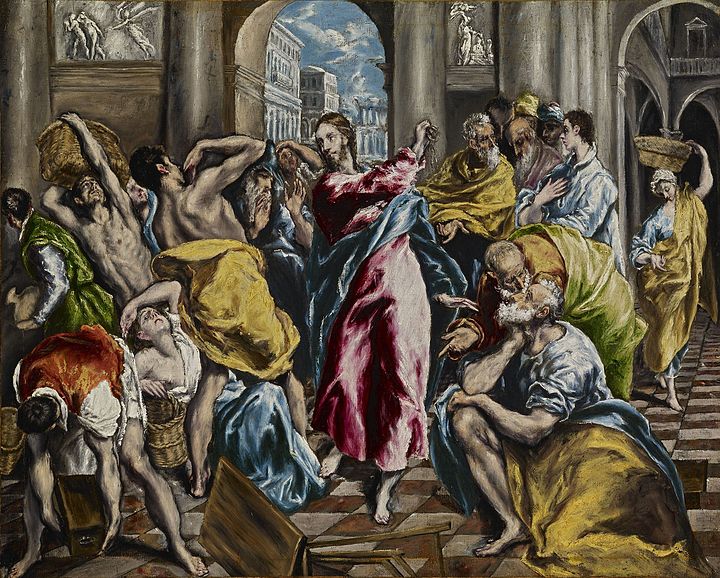
But what Yeshua did was much more radical. Two verses in Mark provide the clue.
1 He threw out both the traders and their customers – those who were both selling and buying. Not pilgrims, but good Jerusalem citizens coming to do their shopping. (Mark 11.14)
2 He would not allow anyone to carry trade goods through the temple. (Mark 11.16)
Note: the NRSV says he would not allow people to carry ‘anything’ through. This is simply wrong. The Greek word is ‘vessels’ ‘skeuos’, presumably large pottery jars used for transporting grain, oil, wine, etc.
This is the key moment, because the temple had the only eastern gateway in Jerusalem. If the temple was blocked off, traders would have to go through the northern gate by the Antonia Fortress, or by the long southern route through the Fountain Gate.
BUT HOW?
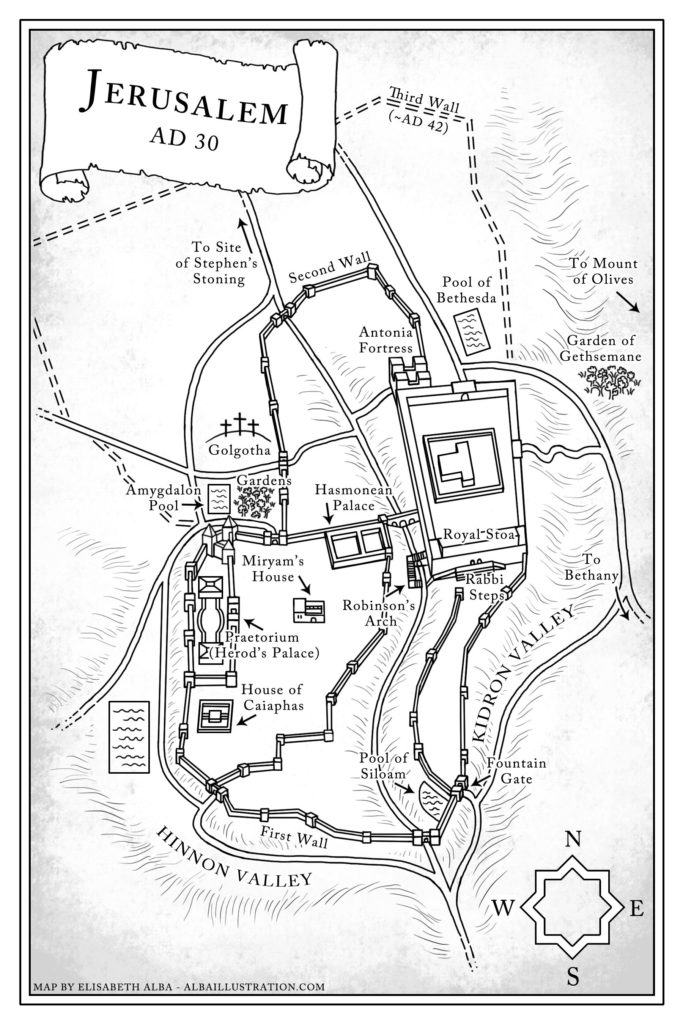
How could Yeshua have prevented the transport of goods through the very large space of the Outer Court? How did he stop the traffic?
There is no evidence, simply imagination and common sense. How do you stop traffic over Westminster Bridge? By blocking it with human bodies.
Yeshua had some resources to hand. He had tens of thousands excitable Galilean followers. And he had the element of surprise. All he needed to do was to arrange for some of them to take over the temple gates, enough of them so that they could not be dislodged by the temple police with their truncheons.
But how did Yeshua get the temple police to leave their stations at the gates? By creating a mini-riot in the middle of the Outer Court:
‘With a rapid two-handed lift Jesus tipped the heavy table up, spilling all the silver coins over the temple floor. He strode over to the next table. “OUT!” he shouted, and tipped that table over too. Soon there was massive confusion with the currency exchangers and the crowd, scrabbling for coins on the marble pavement and other pilgrims joining in the fun.
‘The temple guards rushed to the disturbance but were helpless before the manic uproar which now had infected hundreds of the pilgrims…. Too late , the temple guards realised that they had left all the gateways unattended and that they were now in the hands of burly Galilean pilgrims, looking threateningly pious, and outnumbering the guards two to one.
‘At each of the gates a traffic jam was developing as traders tried to bring their carts through the Temple as a short cut, only to be met by half a dozen muscled northerners who said, “You’re not going to bring that through here, are you, sunshine?” And then they couldn’t turn round because the cart behind them was blocking their way. It was absolute chaos.’
(From ‘Jesus the Troublemaker – his last eight days’)
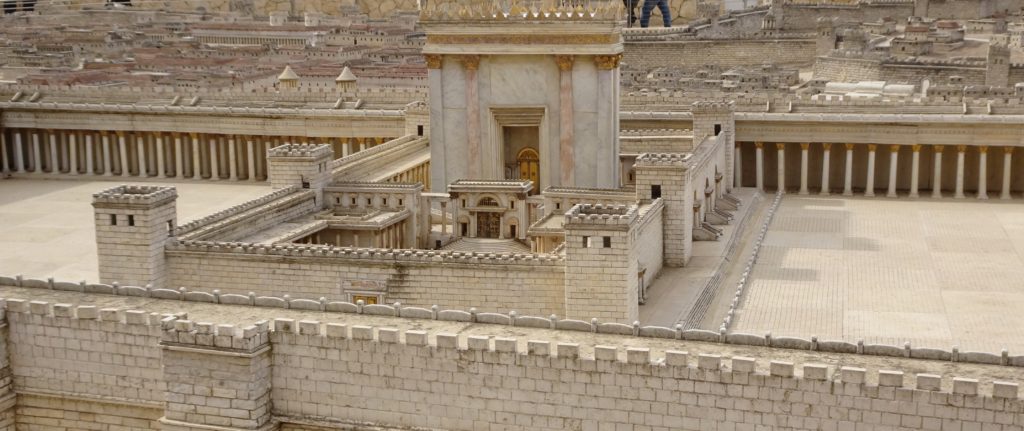
THE TAKEOVER
I am convinced that for the rest of that Passover week, as long as Yeshua was alive and had thousands of loyal followers with him, that ban on using the temple as a short cut stayed in place. The money-changers could have relocated to the area outside the southern gateways by the racing stadium. The dealers in animals could have used the area beyond the northern gate by the Pool of Bethesda, outside the city walls. This is where they must have kept their animals overnight anyway.
Then what? Did Yeshua think better of it, decided he should let things calm down. “I’m very sorry, officer, I won’t do it again.” Jesus was not that kind of person. In fact the following day the chief priests ask him, `’By what authority are you doing these things?” Not, ‘did you do these things.’
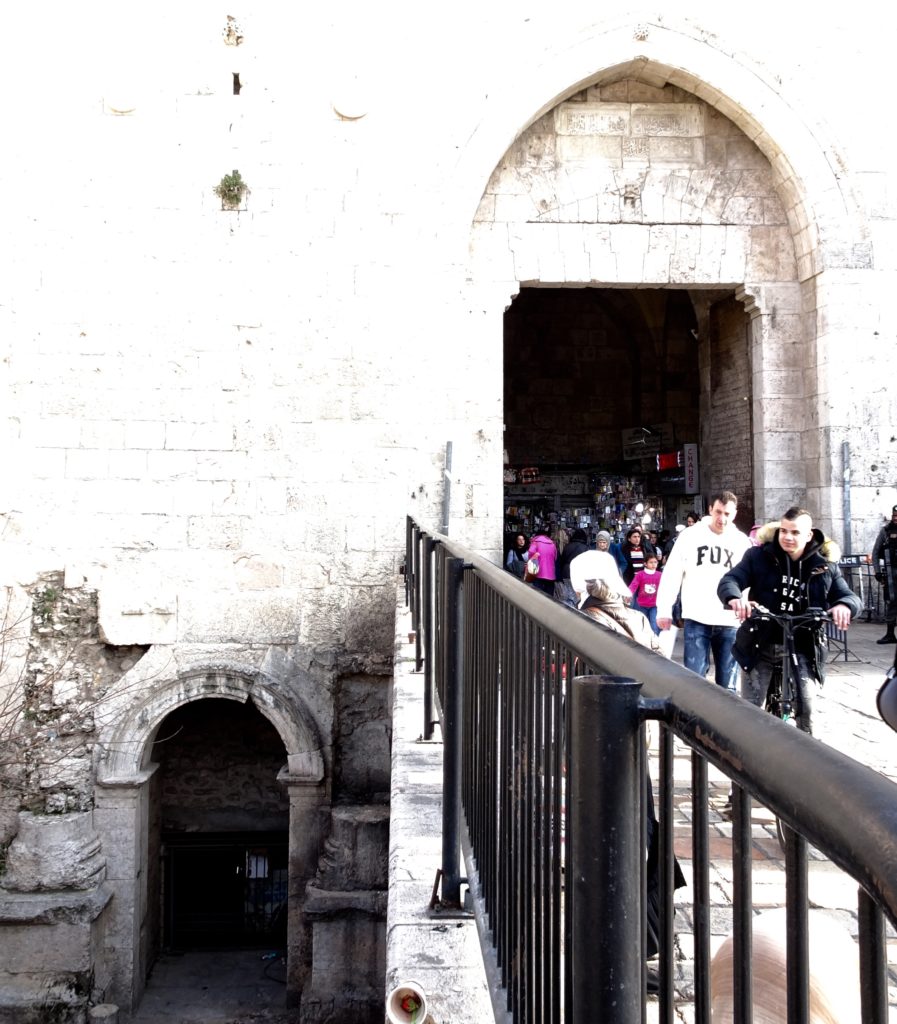
THE CHALLENGE
Over the next few days there were a several confrontations between Yeshua and the temple authorities. Picture the scene. Yeshua is walking and teaching in Solomon’s Porch, as he did earlier at the Feast of Dedication (John 10.23). Solomon’s Porch or Portico was a massive double colonnaded walkway running the whole length of the eastern wall. It was directly in front of the entrance to the temple itself – the Court of Israel leading to the Court of Priests and the Hall of Unpolished Stone where the Sanhedrin met. It was a direct attack on the temple establishment, the high priests and the religious lawyers.
Damascus Gate, Bottom archway c. 100 AD.
But not the Pharisees. Only Matthew has a direct attack on them, the whole of Matthew 23. I believe this reflects the later situation after the fall of Jerusalem in AD 70, when the Pharisees re-established Judaism as a rabbinic religion. Matthew’s editorial insertion marked the start of the shameful history of Christian anti-semitism.
WHAT HAPPENED NEXT?
We are familiar with the next stage of the story: the Last Supper, Yeshua’s arrest and trials, his crucifixion, the empty tomb. But questions arise which stubbornly refuse to go away. Did Yeshua engineer his own death? What was Yeshua thinking in the lead up to all this? My next article ‘What did he actually think?’ aims to shed some light.
